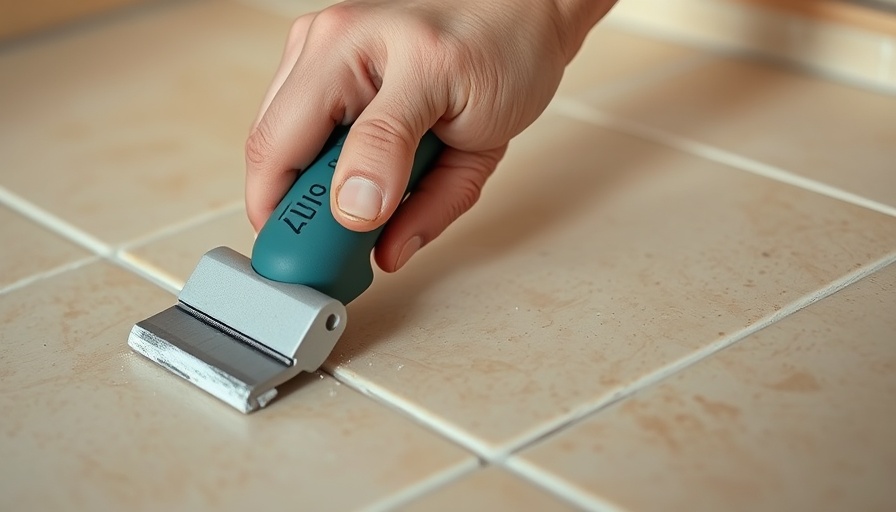
Understanding the Importance of Ceramic Tile Care
Ceramic tile floors are a beautiful and resilient choice for any home, valued not just for their aesthetics but also for their durability. As homeowners, maintaining these floors is essential to preserve their charm and longevity. When dirt particles, dust, and sand accumulate on ceramic tiles, they threaten to mar the surface and diminish the overall look of the home. This is especially evident in high-traffic areas like kitchens and bathrooms. Regular cleaning ensures that your tiles not only gleam but also last for years to come.
Essential Tools and Supplies for Effective Cleaning
Before diving into the cleaning process, it’s essential to gather the right tools to ensure effective maintenance. A soft broom or vacuum is crucial for day-to-day cleaning, while a steam mop will assist in deeper cleans. Here are the must-have supplies:
- Soft broom or vacuum
- Steam mop
- Mild detergent and warm water
- Baking soda
- Hydrogen peroxide
- Dishwashing soap
- Microfiber cloths
- Commercial tile cleaner (optional)
- Vinegar solution
Step-by-Step Guide to Regular Cleaning
To keep ceramic tile floors looking their best, follow this straightforward routine:
- Sweep regularly: Sweep or vacuum 2-3 times each week to remove dirt and grit that could cause scratches.
- Mop weekly: Use a mixture of mild detergent and warm water for mopping to remove the tougher stains without damaging the tiles.
- Deep clean occasionally: Every couple of months, utilize a steam mop on your tiles to blast away stubborn dirt and revive their shiny finish.
- Safe products: Avoid oil-based cleaners and abrasive materials that ruin tile surfaces. Stick with gentle solutions like dish soap or baking soda mixes.
Deep Cleaning for Lasting Shine
While regular maintenance is excellent for everyday cleanliness, deep cleaning helps maintain the tiles' integrity. Steam mops are incredible tools that use heat and moisture to disinfect tiles while ensuring the surface remains unharmed. This option is not only affordable—averaging between $50-100—but also far less expensive than hiring professionals.
Shower and Bathroom Tile Care Tips
Bathroom tiles often receive more wear and tear due to humidity and soap residues. For cleaning shower tiles, consider the following tips:
- Immediately after showering, use a squeegee to push excess water off the tiles.
- For regular maintenance, use a vinegar and water solution to break down soap scum.
- Apply a specialized cleaner for tougher grime buildup, ensuring it is safe for your specific tile type.
Maintaining the Kitchen’s Ceramic Tile Backsplash
Ceramic tiles aren’t confined to floors; they also enhance the aesthetics of kitchen backsplashes. Given their exposure to food splashes and stains, regular cleaning is essential. Use your chosen cleaning solution and a soft sponge to maintain their appearance:
- Prepare a 50/50 solution of vinegar and water.
- Spray the mixture onto the tiles and let it sit for several minutes.
- Wipe clean with a microfiber cloth for a sparkling finish.
Embracing Eco-Friendly Cleaning Solutions
As homeowners grow more aware of their environmental impact, utilizing eco-friendly cleaning agents like vinegar and baking soda can reduce chemical usage while ensuring clean surfaces. These alternatives are not only effective but also safe for your health and home.
Conclusion: Make Tile Maintenance a Habit
Regular care and appropriate cleaning strategies are the key to preserving the beauty of ceramic tiles in your home. By committing to these practices, you ensure that your floors and walls remain not just beautiful but durable over time. Emphasizing the importance of using safe cleaning methods will not only keep your tiles in pristine condition but also promote a healthier living environment.
Call to Action: Begin practicing these cleaning tips today, and watch your ceramic tiles transform! Share your experience and continue spreading awareness about maintaining your beautiful tile floors.
 Add Row
Add Row  Add
Add 




Write A Comment